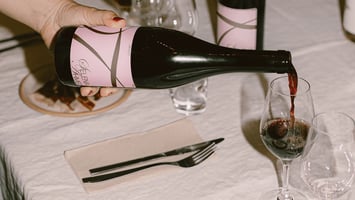In the bustling world of hospitality, restaurant owners and general managers are always on the...
Maximizing Revenue: 2 Pillars of a Successful Wine Program

Creating a successful wine program for your restaurant is not just about stocking up on expensive bottles; it's about understanding your clientele, offering a balanced selection, and continuously adapting to meet their preferences. Here’s a comprehensive guide to help restaurant beverage managers craft a wine program that enhances dining experiences and boosts profitability.
The Foundation: Selection and Staff
At the heart of any successful wine program are two critical components: the selection of wines and the team that presents them. This post focuses on the former, but it's important to acknowledge that having knowledgeable and passionate staff is equally crucial. Through careful hiring, rigorous on-boarding, and ongoing training, your staff can elevate the wine drinking experience, guiding customers through your curated selection with confidence and insight.
How to Select the Wines
Understanding Your Customers
Before you can decide on the wines to feature, you need to understand your customers deeply. Usually, the customer segments heavily depends on the cuisine, the average ticket size, and the local neighborhood. Are they predominantly premium wine drinkers seeking rare finds, or casual wine enthusiasts looking for approachable, easy-drinking options?
Determining Your Budget
A critical step in designing the wine list is determining your budget, which should be driven by the expected return on investment (ROI). Look at sales data from comparable restaurants with similar size of their wine lists or local industry benchmarks to set realistic goals. While a larger wine list can increase the chances of meeting customer preferences, remember the law of diminishing returns. Align your inventory with your sales capacity to ensure a compelling ROI, e.g. if you can sell $10K a month, it might not be wise to hold onto $1M worth of wine (which translates to 8.4% annual return assuming an average of 70% profit margin).
Allocating Your Selection
Recognize that customers' preferences can vary widely, e.g. some might be looking for Bordeaux red while some might be looking for German riesling. A successful wine program caters to these diverse tastes, balancing the selection to appeal to most of your target customers. Once you have a grasp on your customers’ preferences, it’s time to allocate your selection. How many wines should be white, red, or sparkling? How many wines should be domestic, French, Italian, Spanish, or other regions? How many premium versus value wines should you include? This decision should be informed by a clear understanding of your clientele's preferences and the dining experience you aim to provide. If you truly have no idea, it's always a good idea to find an model restaurant that you aim to be and learn from their list.
The Importance of Iteration
Don’t strive for perfection from the get-go; instead, focus on iteration. Experiment with introducing new selections, such as a range of California wines or a selection of premium bottles, and measure their performance not just in sales, but also in ROI. Keep in mind that the impact of some experiments especially ones that require new customer segments discovering your offerings may take time to manifest. For instance, if your restaurant has not been offering premium wines and you want to experiment premium wine offerings, it might take some time for the premium wine drinkers to learn about your offering.
Another equally important but often overlooked iteration is to monitor which part of the wine list has not been generated sales. Periodically pruning those hard-to-sell wine selections through promotion or BTG is critical as that frees up your cash flow to reinvest onto new selections that might fit your customers' preference better.
Key Takeaways for Beverage Managers
- Know Your Audience: Tailor your wine program to fit the preferences of your customer base, balancing between premium and casual options.
- Budget Wisely: Use sales data and industry benchmarks to inform your purchasing decisions, ensuring your investment matches your sales potential.
- Experiment and Adapt: Periodically move your hard-to-sell items through promotion of BTG to free up the cash flow and reinvest into new selections incrementally, evaluate their performance, and adjust based on ROI. Be patient as new offerings gain traction.
Building a successful wine program is an ongoing process of understanding your customers, making informed selections, and being open to change. By following these guidelines, you can create a wine experience that not only satisfies your customers but also contributes positively to your restaurant's bottom line.


.jpg?height=200&name=image_fx_%20(1).jpg)

